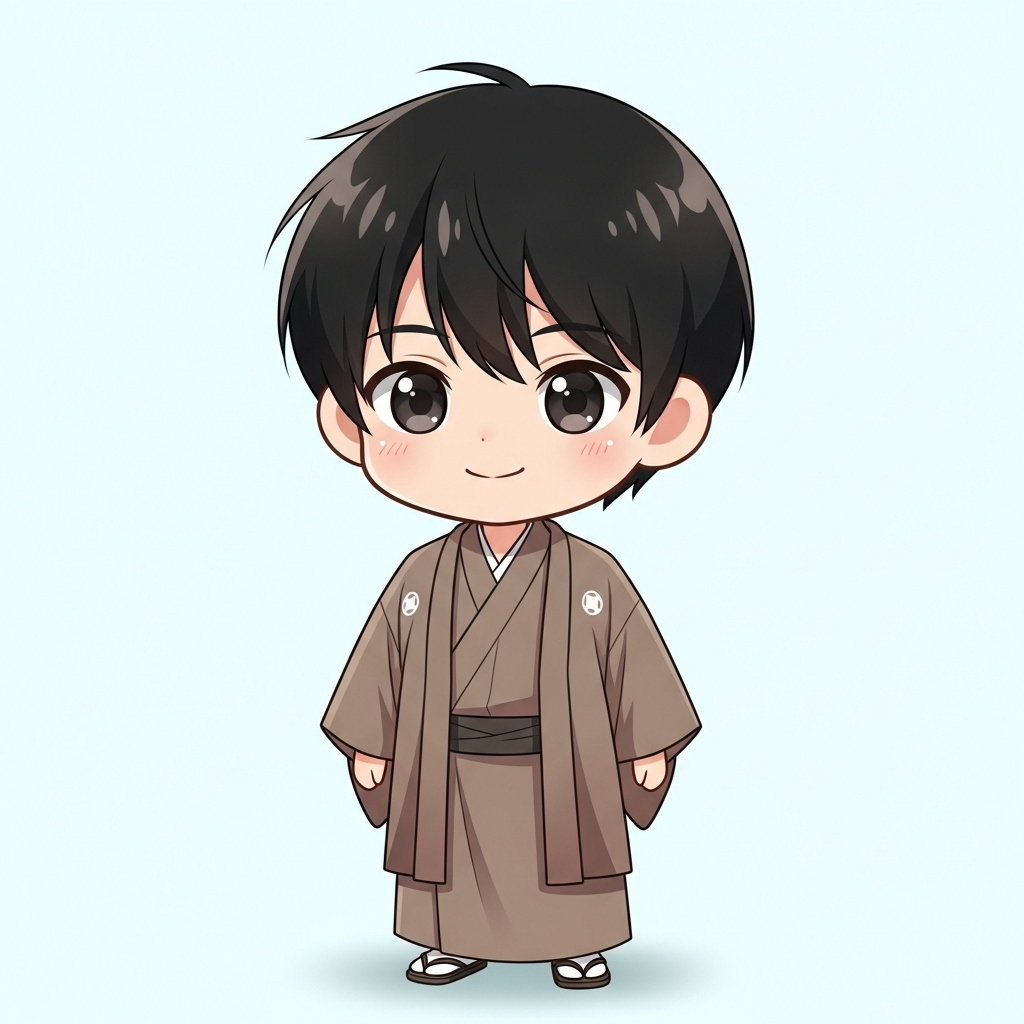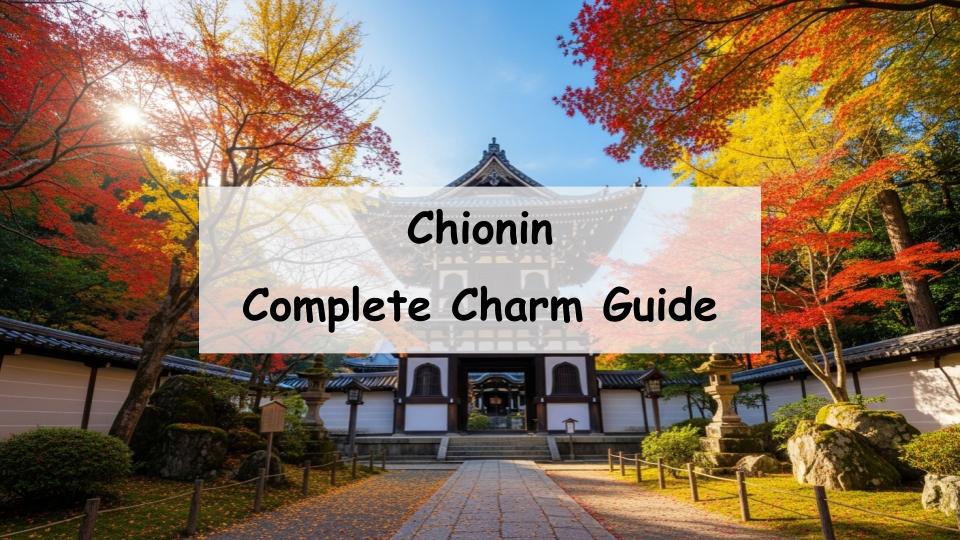If you’re planning a trip to Kyoto, you may find yourself wondering, “What kind of place is Chion-in?” As the head temple of the Jodo (Pure Land) sect of Buddhism, Chion-in holds deep historical and religious significance. It’s renowned for its massive wooden gate, stunning architecture, tranquil gardens, and sacred atmosphere. In this article, we’ll guide you through everything you need to know about Chion-in, including its history, must-see highlights, and how to get there. Whether you’re a first-time visitor or a curious traveler seeking deeper knowledge, this guide will reveal the full charm of Chion-in.
- What Is Chion-in? History and Background
- Highlights of Chion-in: What Not to Miss
- Appreciating Chion-in’s Architecture and Cultural Treasures
- How to Get to Chion-in and What’s Nearby
- How to Enjoy Your Visit to Chion-in Respectfully
- Immersive Cultural Experiences at Chion-in
- Frequently Asked Questions Before You Visit
- A Message from the Guide
What Is Chion-in? History and Background
Origins and Connection to the Jodo Sect
Chion-in is the head temple of the Jodo sect, founded by the monk Honen, who preached the exclusive practice of nembutsu (reciting the name of Amida Buddha). Chion-in stands on the site where Honen spent his final years, and it was established by his disciples to honor his teachings. Since then, it has served as the spiritual heart of the sect.
Religious Importance of Chion-in
As the main temple of the Jodo sect, Chion-in is a sacred destination for followers across Japan. The principal image enshrined here is Amida Nyorai (Amitabha Buddha), representing salvation and rebirth in the Pure Land. The temple also hosts key rituals and ceremonies, making it a cornerstone of Jodo Buddhism.
Admission Fees, Hours, and Access
While parts of Chion-in’s grounds are open to the public for free, some areas like the Hojo Garden require an entrance fee. Visiting hours typically range from 9:00 AM to around 4:00 PM, though this may vary seasonally. Chion-in is located in Kyoto’s Higashiyama Ward and can be reached by foot from Gion-Shijo Station (Keihan Line) or Higashiyama Station (Subway Tozai Line).
Highlights of Chion-in: What Not to Miss
Experience the Grandeur of the Sanmon Gate (National Treasure)
Chion-in’s iconic Sanmon Gate is a national treasure and among the largest wooden temple gates in Japan, standing about 24 meters tall and 50 meters wide. Built in 1621, it embodies architectural splendor and spiritual presence. During special occasions, visitors can climb to the upper level and enjoy panoramic views of the surrounding area.
The Majestic Mieido (Main Hall)
The Mieido, or Main Hall, enshrines a portrait of Honen and forms the spiritual center of the temple complex. After extensive restoration completed in 2020, the hall now showcases its magnificent design and solemn ambiance. The interior exudes reverence, offering a peaceful and spiritual space for reflection.
The Beauty of Hojo Garden and Yuzen Garden
Chion-in features two unique gardens with distinct styles. Hojo Garden blends dry landscape elements with a strolling pond garden, highlighting seasonal scenery. Yuzen Garden, dedicated to Yuzen Miyazaki—the founder of Yuzen dyeing—presents a harmonious mix of modern sensibility and traditional aesthetics.
Seasonal Events and Night Illumination
Chion-in holds special illumination events during spring and autumn, where the temple grounds are beautifully lit at night. The contrast between the historical architecture and the gentle glow of lights creates a magical atmosphere. Seasonal temple stamps (goshuin) are also offered during these times.
Best Viewing Spots for Cherry Blossoms and Autumn Leaves
In spring, cherry blossoms bloom vibrantly near the Sanmon Gate. In autumn, the entire temple complex is adorned with vivid red and orange foliage. Yuzen Garden, in particular, becomes a photogenic spot that showcases the rich seasonal palette of Kyoto.
Appreciating Chion-in’s Architecture and Cultural Treasures
National Treasures and Important Cultural Properties
Chion-in is home to numerous historic buildings, including the Sanmon Gate (National Treasure), and other structures such as the Seishido and Amida Hall, which are designated Important Cultural Properties. These buildings represent centuries of Japanese religious architecture.
Architectural Style and Design Features
Many of Chion-in’s buildings reflect architectural styles from the early Edo period, with elaborate woodwork, gracefully curved roofs, and symbolic ornamentation. The intricate craftsmanship of the carvings and roof structures demonstrates the skill of the period’s master builders.
A Fusion of Japanese Architecture and Buddhist Art
Chion-in’s aesthetic combines architectural beauty with profound religious symbolism. From the serene statues of Amida Buddha to the painted ceilings and decorative motifs, the temple offers a spiritual and artistic experience that resonates with both believers and art lovers.
How to Get to Chion-in and What’s Nearby
Access from Kyoto Station
From Kyoto Station, take a city bus to “Chion-in-mae” (approx. 20 minutes), followed by a short 5-minute walk. Alternatively, you can take the Subway Tozai Line to Higashiyama Station or the Keihan Line to Gion-Shijo Station, both of which are about 10 minutes on foot from the temple.
Nearby Tourist Attractions and Suggested Routes
Chion-in is ideally located near popular sites such as Maruyama Park, Yasaka Shrine, and the Gion district. A scenic walking route allows you to start at Chion-in and continue toward Kiyomizu-dera, exploring Kyoto’s traditional streets and cultural highlights along the way.
Recommended Local Food Spots
Around Chion-in, you’ll find many traditional restaurants and cafes, offering Kyoto specialties such as yudofu (tofu hot pot) and wagashi (Japanese sweets). The Gion area also features elegant cafes and tea houses perfect for a relaxing break after sightseeing.
How to Enjoy Your Visit to Chion-in Respectfully
Easy Guide to the Visiting Process
Begin your visit by paying respects at the Mieido (Main Hall), then explore the temple grounds, gardens, and historic structures. Clear signage and maintained paths make it easy for first-time visitors to enjoy the experience at their own pace.
Proper Etiquette During Your Visit
As a sacred temple, Chion-in requests visitors to be mindful of their behavior. Please keep conversations quiet, refrain from eating or drinking within the temple grounds, and respect any “No Photography” signs. Courtesy and reverence are essential parts of the visit.
How to Receive a Goshuin (Temple Stamp)
Goshuin are available at dedicated counters near the Mieido. Bring your goshuincho (stamp book), or purchase one on-site. Be sure to arrive within official hours and follow staff instructions to receive your stamp in an orderly manner.
Immersive Cultural Experiences at Chion-in
Make the Most of Guided Tours
During special periods, Chion-in offers guided tours that provide deep insights into its history and architecture. These tours may include access to areas not normally open to the public, making them ideal for those seeking a richer understanding of the temple.
Try Traditional Experiences Like Sutra Copying or Zen Meditation
Chion-in also offers cultural programs such as sutra copying (shakyo) and Zen meditation (zazen), allowing visitors to connect with Buddhist practices in a meaningful way. These experiences are available by reservation and provide a calm, introspective atmosphere.
What to Expect During Limited-Time Openings
Chion-in occasionally opens restricted areas to the public during seasonal or commemorative events. These special viewings often include rare cultural properties or closed-off gardens, giving visitors a unique glimpse into the temple’s hidden treasures.
Frequently Asked Questions Before You Visit
Can I Enjoy Chion-in on a Rainy Day?
Yes, many of Chion-in’s attractions are covered, making it a pleasant destination even in wet weather. In fact, the rain enhances the mossy gardens and creates a serene ambiance across the temple grounds.
Is It Suitable for Families and Seniors?
Absolutely. The temple is spacious with relatively gentle slopes, making it accessible for visitors of all ages. Benches and rest areas are available, so families with children or elderly visitors can enjoy the site comfortably.
When Is the Best Time to Visit Chion-in?
Each season offers a different kind of beauty. Spring brings cherry blossoms, autumn showcases vivid foliage, and winter offers a quiet, reflective atmosphere. Even summer, with its lush greenery, can be a refreshing time to explore. No matter when you go, Chion-in always has something special to offer.
A Message from the Guide

I was overwhelmed by the massive size of the Sanmon gate.













Comment